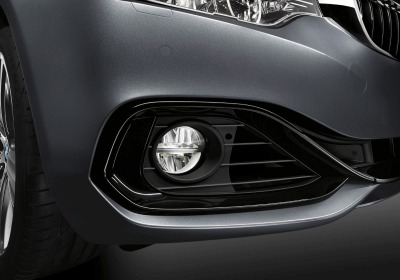First Sight: BMW 4 Series
Mon, 17 Jun 2013Within BMW, it was an ongoing discussion for two decades: what to call the coupé version of the 3 Series? With the new model pictured here, the advocates of change got it their way. The proliferation of models most likely tipped the scales – besides the 3 Series sedan, there is the Touring, the 'Gran Turismo' and the China-only long-wheelbase version. Additionally, in the future, we will see not only the coupé but also a 4 Series Cabriolet and likely a 'Gran Coupé'. Nevertheless, the decision was difficult; few nameplates have as much equity as the '3 Series' moniker – BMW hopes that enthusiasts will "get it out of their system soon." They might as well start practicing to say "M4".
The styling of the 4 Series coupé does not come as a big surprise, thanks to the preview provided by the Concept 4 Series at the Detroit auto show earlier this year. The new car is longer (4,640mm, plus 26mm), significantly wider (1,830mm, plus 43mm) and lower (1,360mm, minus 16mm) than its 3 Series coupé predecessor while the wheelbase has been stretched by 50mm to 2,810mm. The rear track is wider by a full 80mm, leaving the question whether there is much room left for the M4. The DLO retains its style with a pronounced Hofmeister kink, but the flanks are successfully broken up with far more pronounced character lines. The curious upward curve of the front door opening has disappeared.
While the front and rear end of the outgoing 3 Series coupé were styled more conservatively than its four-door counterpart, the 4 Series adds a strong measure of aggressiveness. Like on the new 3 Series, the headlights are connected to the chrome kidneys. The style and number of grille slats now correspond to the trim level, not to the engine selection, denoting the current priorities at Bavarian Motor Works. The headlights, which can be specified as full LED units, feature a busy contour that marks a link to the 3 Series sedan and Gran Turismo, while walking away from the distinct look of the predecessor. The somewhat uncomfortable angle in the front hood is likely a nod to pedestrian protection, just like on the 3 Series.
The lower air intakes might well prove to be the most controversial element of the 4 Series – their wrinkled contour and their placement on the outer ends of the front fascia lends an overly aggressive look to the car, not dissimilar to the solution Mercedes-Benz found for the facelifted E63 AMG. The M Sport package with more simple, if slightly larger, air intakes actually looks more subtle than the other versions. Curiously, the 4 Series keeps fog lamps; we had been told by BMW for years that they were obsolete. And in another retro touch, the 4 Series can be specified with a conventional sunroof instead of a panoramic roof.
BMW insists that the "air breathers" behind the front wheel serve a functional purpose, but we suspect that it is chiefly a cosmetic one. They come in various colors and degrees of gloss, according to the trim level selected. At the rear, the shape of the lamps follows the form of the side profile, which leads to a somewhat weak overall contour.
Inside, the 4 Series is a very close relative of the 3 Series; the dashboard is carried over virtually without changes. Depending on the trim level, there is a large selection of colors and materials. In our opinion, the base level is somewhat lacking in grace; "Luxury" adds a conservative, elegant touch to the car, while "Modern" offers an airy feel in the cabin. We hear that the light-colored steering wheel, previously a trademark of this trim level, was unpopular with customers – lamentably, the default option will henceforth be a black steering wheel even on light-colored versions. "Sport" and "M Sport" play with painted stripes and different styles of aluminum.
The technological aspects of the 4 Series correspond with the 3 Series, with which it shares its platform. This means it will be up to 45kg lighter than its predecessor. The car shifts to electromechanical power steering, and compared to the 3 Series sedan the suspension is significantly stiffened, in line with the coupe's sporting aspirations.
At launch, the car comes with a 245-PS, 2.0-liter four in the 428i; a 306-PS, 3.0-liter i-6 in the 335i; and a 184-PS, 2.0-liter four-cylinder turbodiesel in the 420d. All-wheel drive is optional on the gasoline-powered models, and all of them can be specified either with a six-speed manual or an eight-speed automatic. Down the road, BMW will offer an entry-level 420i with 184 PS, a 430d with a 258-PS, 3.0-liter i-6, and the 435d with a 313-horsepower, 3.0-liter i-6. An M4 with a twin-turbocharged 3.0-liter i-6 and close to 450 PS is in the wings.
With its near-perfect proportions, its more muscular stance and its aggressive detailing, we have no doubt the 4 Series will hold its ground against the ageing Audi A5 and the busily facelifted Mercedes-Benz E class coupé. The theme that was established with the E36 coupé in 1992 and refined throughout the E46 and E92 model generations is proving its quality and longevity once more.
By Jens Meiners



